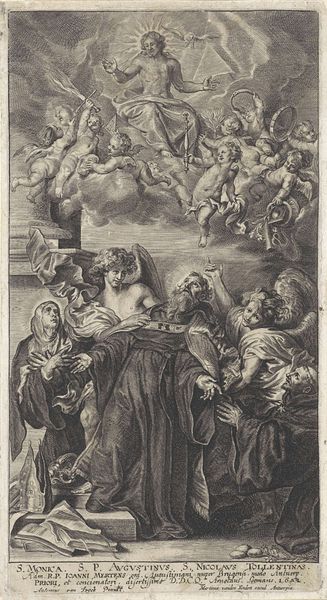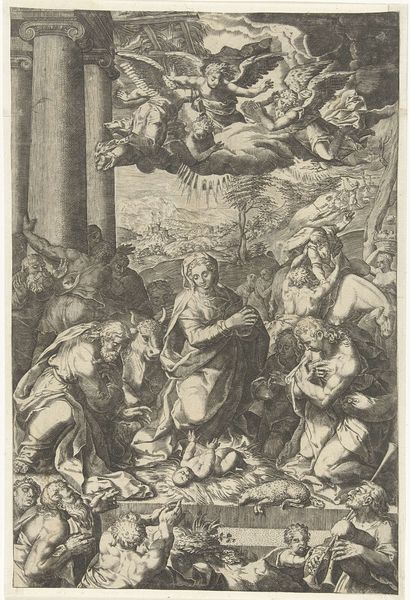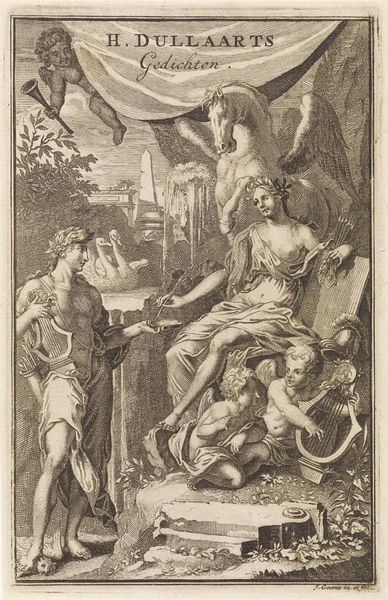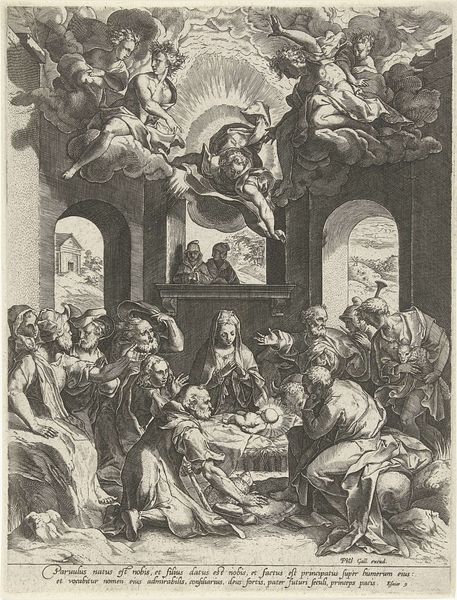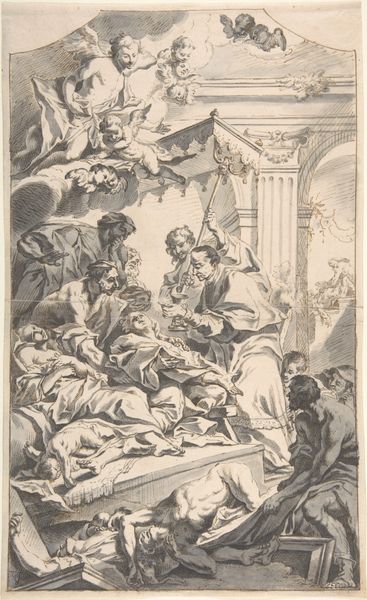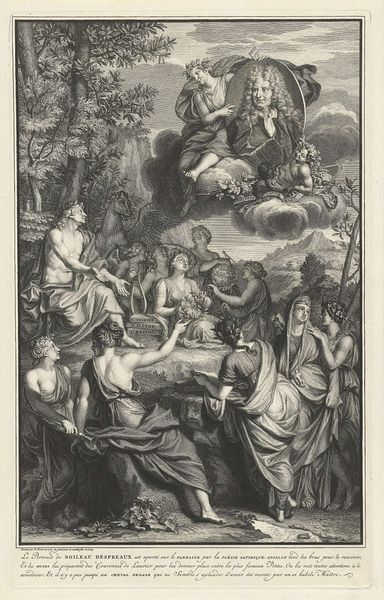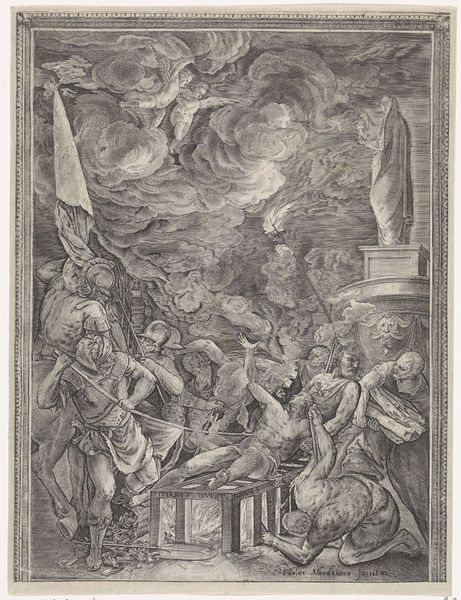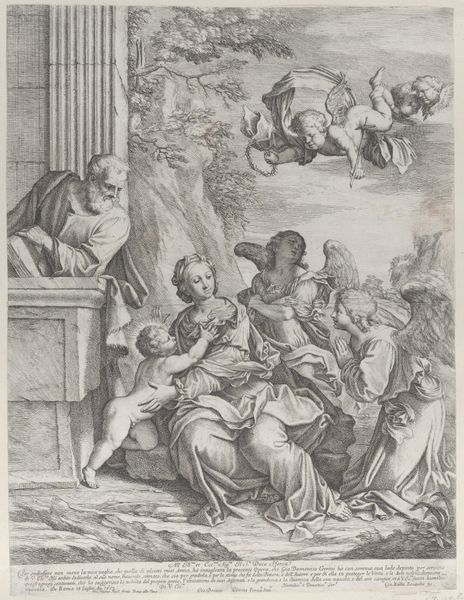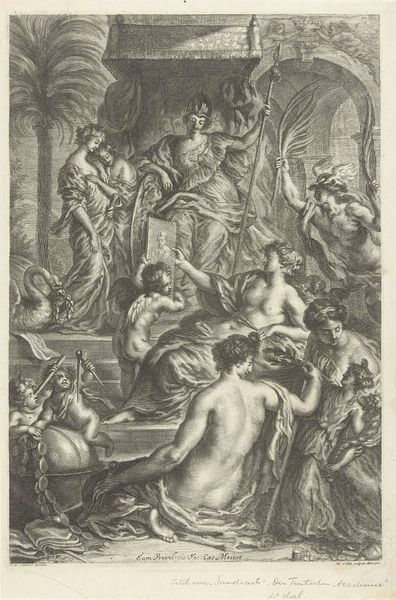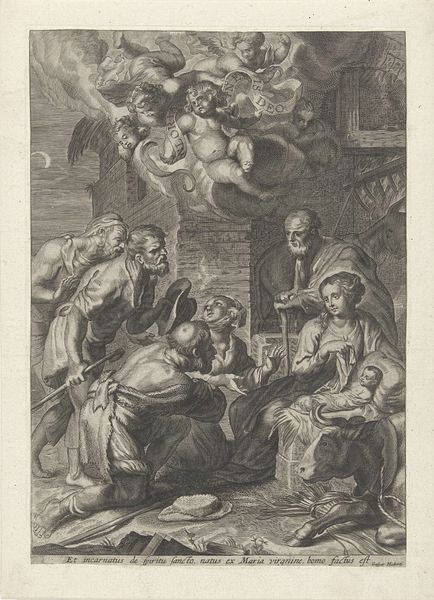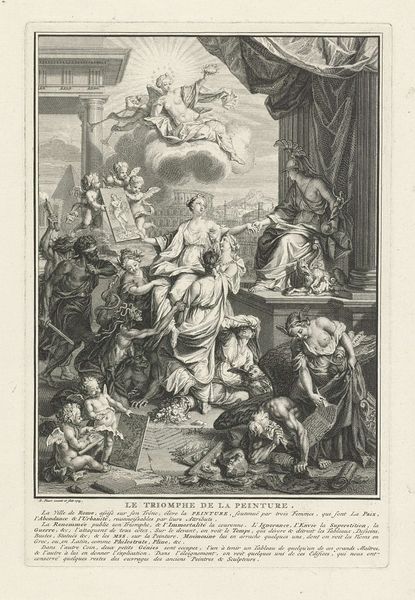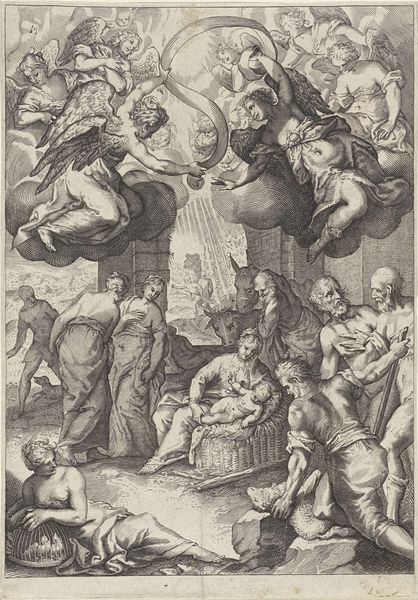
drawing, ink, engraving
#
drawing
#
pen sketch
#
pencil sketch
#
mannerism
#
figuration
#
ink
#
pen-ink sketch
#
pen work
#
history-painting
#
engraving
Dimensions: height 507 mm, width 344 mm
Copyright: Rijks Museum: Open Domain
Curator: Looking at this, I’m immediately drawn to the way the light flickers. It's a whirlwind, an energetic swirl caught on paper. What's the story behind this piece? Editor: This is Agostino Carracci’s "Mystic Marriage of Saint Catherine," created around 1582. It's an engraving, a pen and ink drawing. It now resides at the Rijksmuseum. We see the infant Christ placing a ring on St. Catherine’s finger, sealing their mystical union. Curator: Oh, I can feel that sacred union radiating. The faces of the figures have such sweetness, almost idealized. The angels above them look like cherubic confetti exploding outwards. And those swathes of fabric—are they ever so subtly decadent. Editor: You've zeroed in on key features of Mannerism, the style to which this work belongs. The figures are elegant, elongated, and positioned in somewhat artificial poses. There is a rejection of realism that leans towards affectation, with beauty elevated over strict naturalism. Agostino Carracci’s image, though devout, fits within the changing expectations around sacred art. Curator: Mannerism always felt a little rebellious to me, a sort of painterly "break the rules" movement, particularly within the historical constraints of the Catholic church. I get the sense Carracci found a bit of freedom to move outside of established realism and include his unique fingerprint, almost pushing the established expectations around divine art. The emotion radiating out, for example, isn’t just reverence; I think there's an unmistakable, well-humored, playful sensuality here as well. Do you think it might be intentionally disruptive? Editor: Intriguing perspective. While overt disruption wasn't generally the goal, the shift away from Renaissance ideals certainly held political undertones. By embracing artifice, Mannerism indirectly questioned established authority and promoted a new artistic vision. The very act of stylistic departure held meaning in the broader cultural landscape. Art wasn’t merely representation, but invention and expressive thought. Curator: So, it wasn't simply "anything goes," but rather a calculated way of asserting agency through aesthetics. Very sneaky. Well, Agostino has certainly given us much to admire and to think about in this beautiful piece. Editor: Precisely. It's a compelling reminder that the power of art extends beyond the image, encompassing its historical role.
Comments
No comments
Be the first to comment and join the conversation on the ultimate creative platform.
